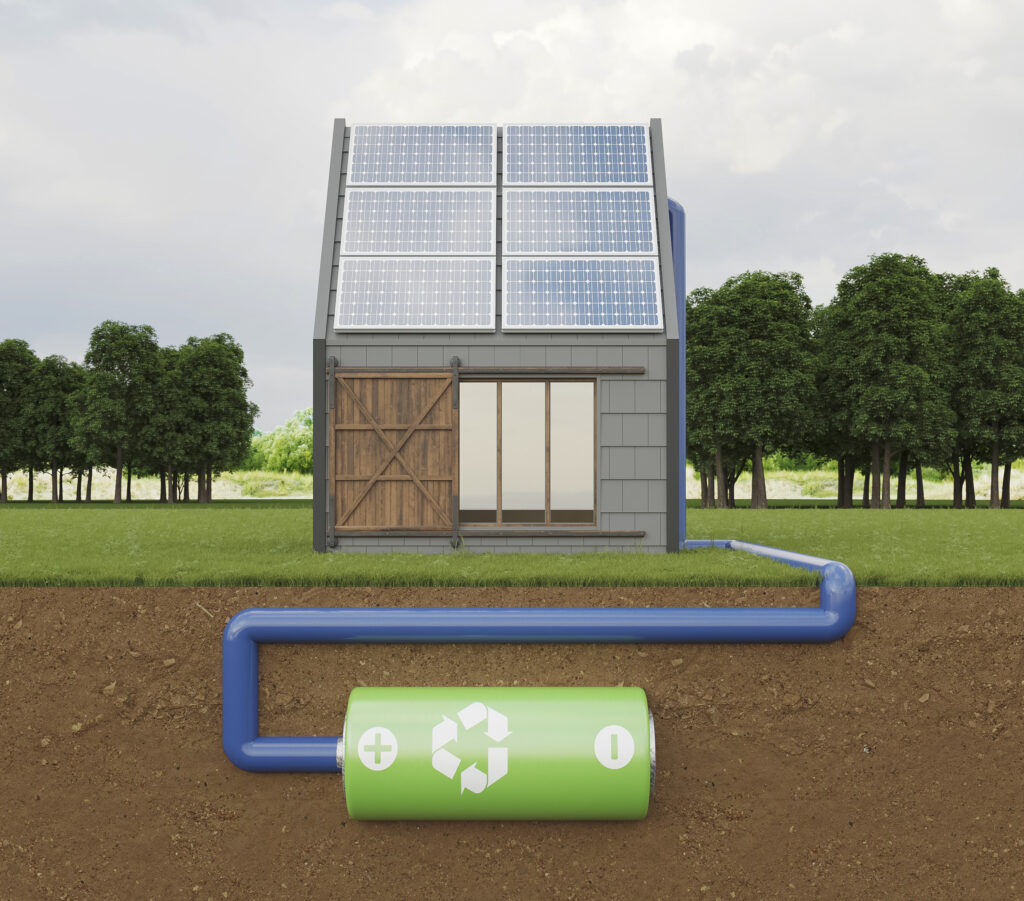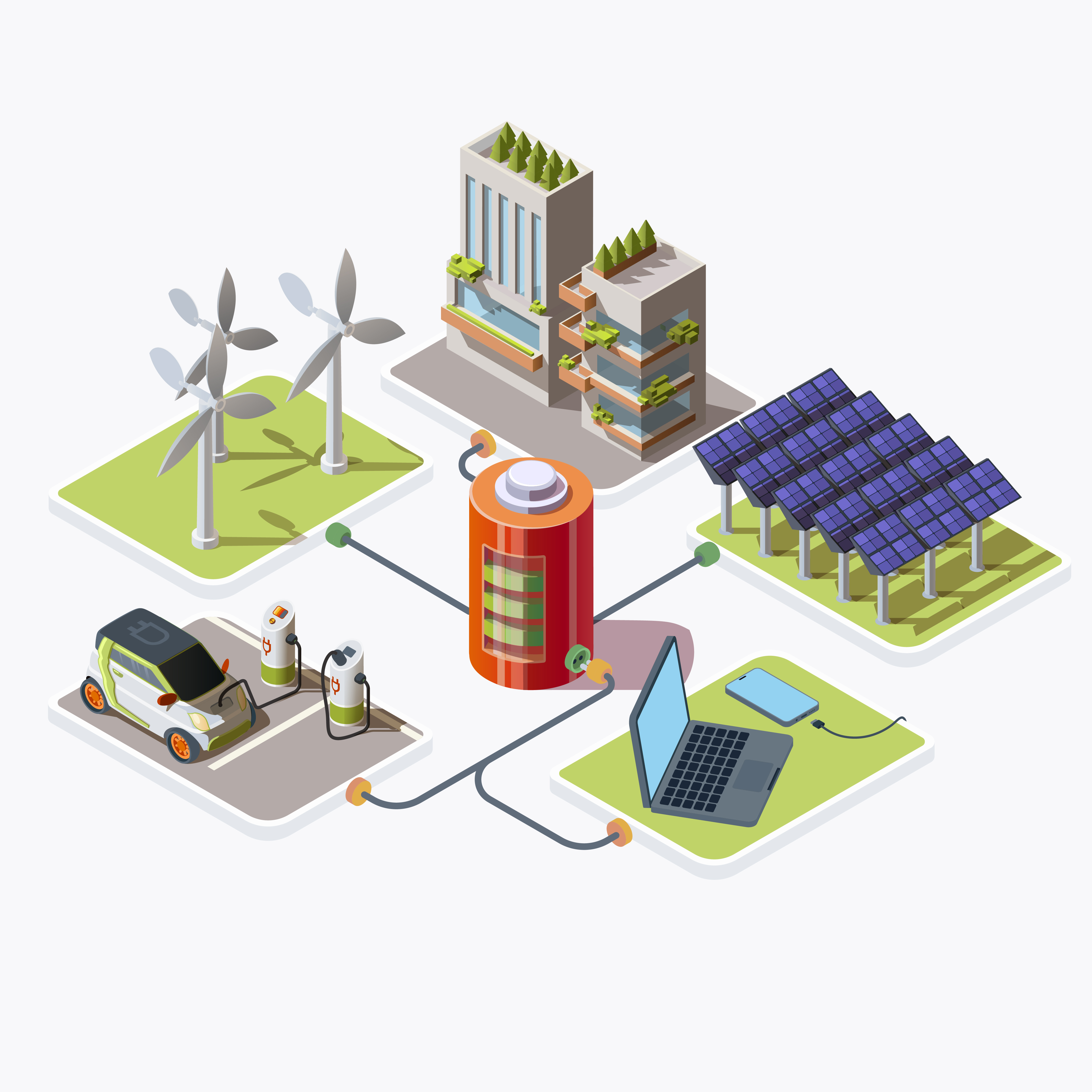Table of Contents
ToggleIntroduction
In recent years, the integration of renewable energy sources like solar power into our energy systems has gained significant traction. Among the various challenges faced by solar energy, intermittency stands out as a significant hurdle. However, with the advancement of battery storage technologies, the role of batteries in maximizing solar investments has become increasingly prominent. This article delves into the intricacies of this symbiotic relationship, exploring the benefits, challenges, and future prospects of coupling solar energy with battery storage solutions
The Basics of Solar Energy
Solar energy harnesses the power of sunlight through photovoltaic (PV) cells, converting it into electricity. This process involves the absorption of photons by semiconductor materials within solar panels, generating a flow of electrons and thus electrical current. Solar installations can vary in scale, from small residential setups to large utility-scale projects. One of the primary challenges associated with solar energy is its intermittency. Solar panels produce electricity only when exposed to sunlight, which varies throughout the day and is absent at night. Energy storage systems, particularly batteries, play a crucial role in mitigating this intermittency by storing excess energy generated during periods of high sunlight and releasing it when demand exceeds supply.
The integration of battery storage systems with solar installations offers several benefits, ultimately maximizing the return on investment for stakeholders. By storing excess energy during peak production periods, solar owners can reduce their dependence on the grid during times of low solar generation, thereby minimizing electricity costs and enhancing energy independence. Various battery technologies are employed for solar integration, each with its unique characteristics and suitability for different applications. Lithium-ion batteries are currently the most prevalent choice due to their high energy density, efficiency, and declining costs. Additionally, flow batteries offer advantages in terms of scalability and longevity, making them suitable for grid-scale applications.
Environmental Benefits of Solar and Storage
Beyond the financial considerations, solar energy coupled with battery storage offers substantial environmental benefits. By reducing reliance on fossil fuels for electricity generation, solar and storage systems contribute to the reduction of greenhouse gas emissions, thereby mitigating climate change and improving air quality. Numerous case studies showcase the successful integration of solar and storage across various sectors. From residential homes to large-scale utility projects, these examples highlight the feasibility and benefits of coupling solar energy with battery storage solutions.
Looking ahead, advancements in battery technology, coupled with continued cost reductions, are expected to drive further growth in solar and storage integration. Additionally, innovations in grid management systems and demand-side flexibility are poised to enhance the overall efficiency and reliability of solar-powered systems. Despite the myriad benefits, solar and storage integration is not without its challenges. Grid stability concerns, technological limitations, and regulatory barriers pose significant obstacles to widespread adoption. However, ongoing research and development efforts aim to address these challenges, paving the way for a more resilient and sustainable energy future.
Microgrid Solutions for Solar and Storage
Microgrids offer a decentralized approach to energy distribution, incorporating local generation sources like solar and storage to enhance resilience and reliability. By operating independently or in conjunction with the main grid, microgrids can ensure uninterrupted power supply during grid outages or emergencies. Community microgrid projects demonstrate the potential of this technology in enhancing energy security and fostering community resilience. Despite the compelling benefits of solar and storage, several barriers hinder widespread adoption. These include upfront costs, regulatory hurdles, and consumer awareness. Education and outreach initiatives, coupled with targeted financial incentives and supportive policies, are essential in overcoming these barriers and accelerating the transition to a renewable energy future.
The growing penetration of solar and storage systems presents both challenges and opportunities for utility companies. While distributed generation reduces reliance on centralized power plants, it also necessitates adjustments to grid management and revenue models. Forward-thinking utilities are embracing this transformation by investing in grid modernization initiatives and exploring new business models centered around energy services rather than commodity sales. Ensuring equitable access to solar and storage technologies is essential for addressing energy poverty and advancing social equity. Initiatives aimed at providing low-income communities with affordable solar options, such as community solar programs and subsidized installations, can help bridge the energy access gap and empower marginalized populations.
Solar and Storage for Water Management
Water management is a critical aspect of sustainable development, particularly in arid and water-stressed regions. Solar-powered desalination plants offer a renewable and cost-effective solution for producing freshwater from seawater or brackish sources. Additionally, solar pumps and storage systems can provide reliable and energy-efficient irrigation for agriculture, enhancing food security and livelihoods in rural communities.
Understanding consumer attitudes and behaviors towards solar and storage adoption is essential for designing effective outreach and engagement strategies. Factors such as perceived costs, environmental values, and social norms influence individuals’ decisions to invest in renewable energy technologies. By addressing informational barriers, dispelling misconceptions, and highlighting the benefits of solar and storage, stakeholders can encourage greater uptake and acceptance within communitiesEducational institutions play a pivotal role in driving awareness and adoption of renewable energy technologies. Campuses can serve as living laboratories for sustainability initiatives, integrating solar and storage systems into buildings and curriculum. By engaging students, faculty, and staff in renewable energy projects and research, universities can foster innovation and leadership in the transition to a clean energy future.
Solar and Storage for Sustainable Agriculture
Agriculture is a significant energy consumer, particularly in irrigation, processing, and transportation. Solar and storage technologies offer opportunities to reduce energy costs, enhance efficiency, and promote sustainable practices in farming. Solar-powered irrigation pumps, energy-efficient greenhouses, and electric vehicles powered by renewable energy contribute to lower operating expenses and environmental impact, improving the overall sustainability of agricultural operations.
Conservation organizations and protected areas rely on reliable and sustainable energy sources to power monitoring equipment, research stations, and visitor facilities. Off-grid solar installations, paired with battery storage systems, provide a clean and reliable source of electricity for conservation efforts in remote and environmentally sensitive areas. By reducing reliance on diesel generators and minimizing carbon emissions, solar and storage technologies support biodiversity conservation and ecosystem protection. Preserving cultural heritage sites and artifacts requires careful environmental control to prevent deterioration and damage. Solar-powered facilities offer a sustainable and off-grid solution for powering museums, archives, and conservation laboratories, reducing reliance on fossil fuels and minimizing environmental impact. Climate-controlled storage units powered by solar energy ensure stable conditions for preserving delicate materials, artworks, and historical artifacts, safeguarding them for future generations.
Solar and Storage in Remote Sensing
Remote sensing applications, including environmental monitoring, agricultural mapping, and disaster assessment, rely on reliable and off-grid power sources to operate in remote and inaccessible areas. Solar-powered drones and unmanned aerial vehicles (UAVs) leverage solar panels to generate electricity for propulsion and onboard sensors, enabling extended flight durations and data collection missions. Additionally, remote monitoring stations powered by solar energy provide continuous environmental data without the need for grid connections or frequent maintenance.
The e-commerce industry is increasingly embracing sustainability practices, including the adoption of solar and storage technologies in warehouse operations and logistics networks. Solar-powered warehouses and distribution centers leverage clean energy to power lighting, conveyor systems, and electric vehicle charging stations, reducing reliance on grid electricity and lowering operational costs. Additionally, electric delivery vehicles powered by renewable energy support sustainable last-mile logistics, minimizing emissions and environmental impact in urban areas.
Conclusion
In conclusion, the role of battery storage in maximizing solar investments is multifaceted and transformative. From enhancing energy independence and resilience to mitigating climate change and promoting social equity, the integration of solar and storage technologies offers myriad benefits for individuals, communities, and the planet. By overcoming challenges, leveraging innovations, and embracing collaboration, stakeholders can accelerate the transition to a clean and sustainable energy future powered by the sun.
FAQs
The Role of Battery Storage in Maximizing Solar Investments 1. How does battery storage maximize the benefits of solar investments?
Battery storage systems complement solar energy by storing excess electricity generated during peak sunlight hours. This stored energy can then be utilized during periods of low solar generation or high energy demand, maximizing the overall efficiency and value of solar installations.
What types of battery technologies are commonly used for solar integration?
Lithium-ion batteries are the most prevalent choice for solar integration due to their high energy density, efficiency, and declining costs. Additionally, flow batteries offer advantages in terms of scalability and longevity, making them suitable for grid-scale applications.
What are the financial implications of adding battery storage to solar installations?
While the upfront costs of battery storage systems can be significant, advancements in technology and declining prices are making these systems increasingly economically viable. Additionally, financing options such as leasing and power purchase agreements (PPAs) are lowering barriers to entry for residential and commercial customers.
How do regulatory and policy considerations influence the adoption of solar and storage technologies?
Regulatory policies, such as net metering, which allows solar owners to receive credits for excess electricity fed back into the grid, and financial incentives such as tax credits and rebates, can significantly influence the economics of solar investments. Supportive policies and incentives can accelerate the adoption of solar and storage technologies by reducing costs and providing market certainty.
What are some future trends in solar and storage integration?
Looking ahead, advancements in battery technology, coupled with continued cost reductions, are expected to drive further growth in solar and storage integration. Additionally, innovations in grid management systems and demand-side flexibility are poised to enhance the overall efficiency and reliability of solar-powered systems, unlocking new opportunities for maximizing solar investments.







